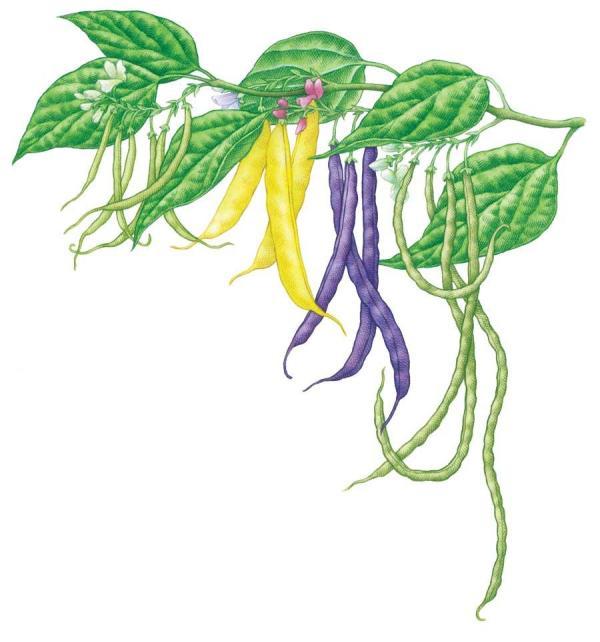All About Growing Beans - Organic Gardening - MOTHER EARTH NEWS (For details on growing many other vegetables and fruits, visit our Crop at a Glance collection page or check out our Food Gardening Guide app.) Dependable and easy to cultivate, beans produce rewarding crops in a wide range of climates. Growing beans during the warm summer months may produce crisp green pods, protein-rich beans, or both, depending on variety. Bean Types to Try Snap beans (Phaseolus vulgaris) — the most popular garden beans — include bush and pole varieties, which vary in shape, size, and color. Tender filet beans are a type of green snap bean with stringless, slender, delicate pods. They are grown just like other snap beans. Growth period: 50-55 days bush, 50-67 days pole. Dry beans (Phaseolus vulgaris) grow like snap beans, but the immature pods stay tender for only a few days as the plants hurry to produce mature seeds. They are easy to dry. Growth period: 55 days green, 85 days dry. Scarlet runner beans (Phaseolus coccineus) produce showy clusters of red blossoms that attract hummingbirds and bumblebees. You can eat the young pods like snap beans, or let the pods dry and harvest the mature beans. Growth period: 60 days green, 90 days dry. Lima beans (Phaseolus lunatus) stand up to humid heat and heavy insect pressure, which makes them a fine bean for warm climates. Growth period: 75 days bush, 85 days pole. Yard-long beans, or asparagus beans (Vigna sesquipedalis), are grown for their long, slender pods, which are harvested at 12 to 18 inches long. Pods may be green, burgundy, or streaked. Growth period: 80 days. Tepary beans (Phaseolus acutifolius), a type of dry bean, were developed by the native people of the Southwest, so they’re well-adapted to desert conditions. They come in various colors. See also: Tepary Beans: The Bean That Laughs at Drought and Ask Our Experts: Tepary Beans. Growth period: 80 to 90 days. When to Plant Beans Bean seeds germinate best when soil temperatures range between 60 and 70 degrees Fahrenheit. In spring, sow seeds in fertile, well-worked soil starting on or after your last frost date. When growing fast-maturing bush snap beans, make additional plantings at three-week intervals until midsummer. How to Plant Beans Prepare the planting bed by using a garden fork to loosen the soil. Mix in a 1-inch layer of mature compost. Plant seeds 1 inch deep and 2 to 4 inches apart. Thin bush beans to 4 inches apart; thin pole beans to 6 inches apart. Wide double rows (two parallel rows of beans planted 12 to 14 inches apart) are the most space-efficient way to grow beans. Harvesting and Storing Beans Harvest green beans when they are young and tender, and use two hands when picking to keep from breaking the brittle plants. Most bush beans will produce a second or third flush of beans after the first one is picked. Harvest pole beans at least twice a week to keep the plants productive. The mature beans of all snap bean varieties usually make good soup beans. Read more: http://www.motherearthnews.com/organic-gardening/growing-beans-zmaz09jjzraw.aspx#ixzz2xwekWNvo


